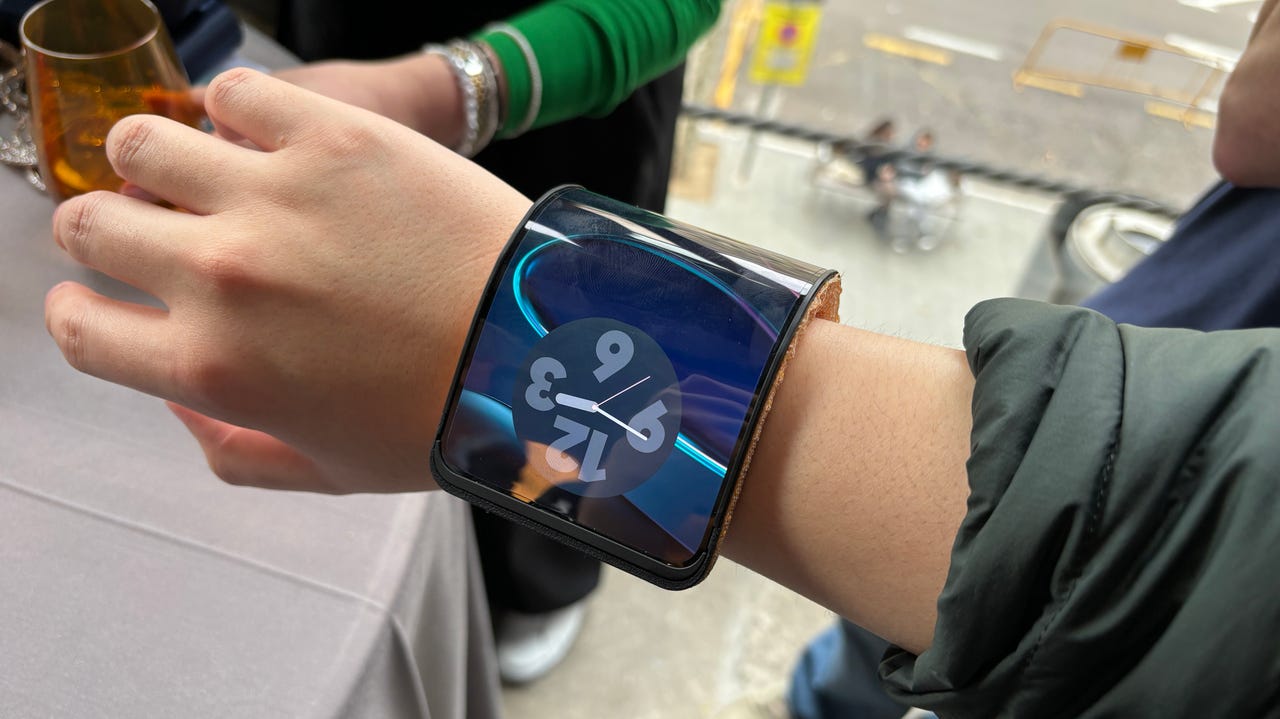
Pre-gaming my week at Mobile World Congress with a demo of Motorola’s bendable phone concept may have been the best worst decision of my life. On one hand, the coolness factor of a phone that can wrap around your wrist is beyond measure. On the other hand, it’s so ambitious that you quickly realize how far-fetched it is when you finally put it on.
Also: Lenovo’s ThinkPad X1 Fold is the most bizarre, fun, and expensive laptop I’ve ever tested
Motorola first unveiled the bendable concept at Lenovo Tech World last October, but I’d like to believe that Barcelona was where the company first took the phone out for in-person demos, because the whole experience sure felt like it, from the glitches and bugs to a fellow journalist doing an impromptu drop test because…magnets and the unpredictable forces that come with beta hardware.
But during the moments when each of us in the room could snap the phone around our wrists, there was always a respectful nod of approval, followed by shutter sounds left and right. This thing rocks. And it’s so geeky that I’m still thinking about it hours later.
The concept phone begins as a 6.9-inch slab, treated with a bendable, woven-fabric material backplate. Look carefully and you’ll see bits of the fabric starting to loosen and tangle out along the edges, but I’m sure even Motorola wasn’t prepared for all the smartphone origami that was going to unfold that evening.
Also: I tested 40 phones over the past year, and these are the very best
Depending on where you stand in the wrist-worn phone debate, the best part of the Motorola concept is either the fact that you can bend it to become its own kickstand or how it magnetically attaches to the accommodating wristband. Bend the phone like a rainbow and you can even get a two-player Connect Four session going.
The band that helps the phone stay on the wrist reminded me of Milanese-style ones, like for the Apple Watch. You snap the band on firmly, align the magnetic pin with the back of the concept phone, and then bend the device until it covers all but one side of your arm. The attachment part of the process took several attempts across several journalists, and because the concept phone already had some weight to it, it felt more like a two-person job than one.
Also: A smartphone without apps? This AI assistant aims to replace them all
To put it nicely, I was able to swipe around the phone like any other, cycling through app folders and a clock widget. But the bugs were strong with this one, and more often than not, the phone didn’t register my taps and inputs.
On the other hand, Motorola also had its “Moto-rolla” concept from last MWC on display, and I couldn’t help but keep gravitating toward that. With a double press of a side key, the rollable display would be pulled from behind the device and onto the front, extending what looked to be a 5.8-inch screen into a 6.8-inch-like size. The software experience was much more refined compared to the bendable, and playing a YouTube video automatically triggered the rollable sequence.
All that is to say I’ve officially tried both of Motorola’s latest concept phones, and if I had to put stock into one of them, I’d choose the rollable over the bendable. Maybe next year, the bendable will outshine Motorola’s 2025 concept device. We’ll just have to wait and see.




















+ There are no comments
Add yours